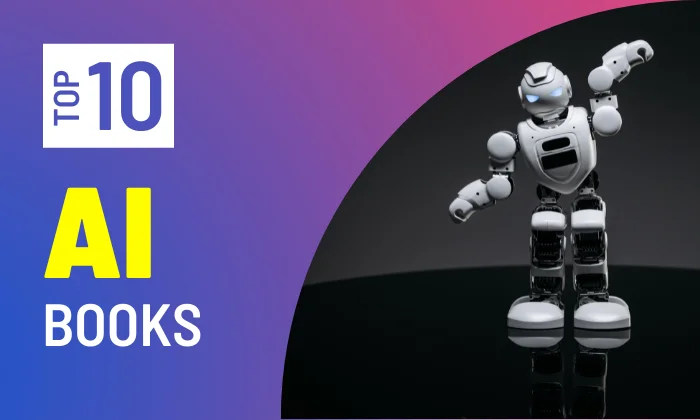These are the top 10 Data Mining books that will help you learn and implement Data Mining.

1. Data Mining: Concepts and Techniques (The Morgan Kaufmann Series in Data Management Systems) 3rd Edition
by Jiawei Han, Micheline Kamber, Jian Pei
This guide explains how to mine all of that data for meaningful information. The fundamental chapters on data preparation, frequent pattern mining, classification, and clustering have been greatly expanded in this third Edition. The book, along with its related website, would be an excellent textbook for classes in analytics, data mining, and knowledge discovery. The authors’ goal was to provide comprehensive coverage of all related methods, ranging from classic clustering and classification to database methods and more recent and sophisticated issues. Overall, it’s a fantastic book that covers both classic and new data mining approaches, and it’s great for both teaching and reference.
2. Data Science for Business: What You Need to Know about Data Mining and Data-Analytic Thinking
by Foster Provost, Tom Fawcett
To demonstrate these principles, this guide gives instances of real-world business situations. You will learn not just how to increase communication between business stakeholders and data scientists, but also how to participate effectively in data science projects at your company. You will also learn how to think analytically about data and how data science methodologies may help you make better business decisions. This book also leads the readers through the “data-analytic thinking” required for deriving relevant knowledge and business value from the data you collect. This tutorial will also assist you in comprehending the various data-mining strategies now in use.
3. Introduction to Data Mining and Analytics
by Kris Jamsa
This edition of the book gives readers a comprehensive and interactive overview of a rapidly evolving field. Data is being generated at an increasingly rising rate, necessitating the hiring of specialists who can efficiently store, analyze, and translate it. This textbook has a thorough how-to and is a wonderful resource for anyone contemplating the field, with a dual focus on principles and operations. Through a practical application to the contemporary concerns of “big data” and text and picture data mining, operations outlined in the preceding chapters are given a real-world perspective. The chapter closes by explaining an analyst’s actions from planning through execution, ensuring that readers have the technical knowledge they need to initiate, lead, or support a data project at work.
4. The Elements of Statistical Learning: Data Mining, Inference, and Prediction, Second Edition (Springer Series in Statistics) 2nd Edition
by Trevor Hastie, Robert Tibshirani, Jerome Friedman
This book presents key concepts from a range of fields, including science, medicine, and marketing, in a single conceptual framework. Despite the statistical approach, the focus is on concepts rather than mathematics. It’s a great resource for statisticians and anyone else interested in data mining in science or business. The book covers a wide range of topics, from supervised to unsupervised learning. Graphical models, random forests, ensemble approaches, least angle regression & route algorithms for the lasso, non-negative matrix factorization, and spectral clustering are among the subjects covered in this important new edition. A chapter on techniques for huge datasets, including multiple testing and false discovery rates, is also included.
5. Data Mining Techniques: For Marketing, Sales, and Customer Relationship Management 3rd Edition
by Gordon S. Linoff, Michael J. A. Berry
This new edition is a substantial improvement over the previous edition, and it demonstrates how to use the most up-to-date data mining tools and strategies to address typical business problems. The writers offer helpful tips for increasing direct marketing campaign response rates, discovering new consumer niches, and calculating credit risk. They also cover advanced topics like data preparation for analysis and setting up the infrastructure for data mining at your firm. With each chapter, the authors introduce a new data mining technique and show how to use it to improve marketing, sales, and customer service and receive quick results.
6. Data Mining and Machine Learning: Fundamental Concepts and Algorithms 2nd Edition
by Mohammed J. Zaki, Wagner Meira Jr
Data science is built on the foundations of data mining and machine learning algorithms, which use automated ways to evaluate patterns and models in various types of data for applications ranging from scientific discovery to corporate analytics. This textbook for senior undergraduate and graduate courses gives students, researchers, and practitioners a complete, in-depth treatment of data mining, machine learning, and statistics. The basics of data analysis, pattern mining, clustering, classification, and regression are laid out in this book, with an emphasis on the algorithms and the underlying algebraic, geometric, and probabilistic principles. A whole section devoted to regression approaches, including neural networks and deep learning, is new to this second edition.
7. Data Mining for Business Analytics: Concepts, Techniques, and Applications in R
by Galit Shmueli, Peter C. Bruce, Inbal Yahav, Nitin R. Patel, Kenneth C. Lichtendahl Jr.
This book is an excellent choice for graduate and upper-undergraduate data mining, predictive analytics, and business analytics courses. This updated version is also a great resource for analysts, researchers, and practitioners in the sectors of business, finance, marketing, computer science, and information technology who engage with quantitative approaches. This edition includes revisions and new content based on feedback from teachers and students teaching MBA, undergraduate, diploma, and executive courses. It includes more than a dozen case studies that show how the data mining techniques mentioned can be used in real-world scenarios. It also offers end-of-chapter tasks that allow readers to assess and improve their understanding of the topic.
8. Python Data Mining Quick Start Guide: A beginner’s guide to extracting valuable insights from your data
by Nathan Greeneltch
This book will serve as a brief introduction to data mining and how to put it to practical use using common Python tools and modules. As a required and foreseeable response to the birth of the information era, data mining is a necessary and expected response. You’ll get a hands-on demonstration of using popular Python packages to deal with real-world datasets and extract important insights from them. You’ll also obtain a comprehensive conceptual overview of common data transformation, grouping, and classification methods. Python, as we all know, is a popular tool for completing these jobs since it provides a large range of data mining tools. By the end of this book, you’ll be able to quickly and easily construct a data mining pipeline in Python.
9. Data Mining for Business Analytics: Concepts, Techniques and Applications in Python
by Galit Shmueli, Peter C. Bruce, Peter Gedeck, Nitin R. Patel
This book contains by far the most comprehensive review of business analytics methods. This book covers everything from traditional approaches like linear and logistic regression to modern methods like neural networks, and much more. It also contains more business-specific procedures like social network analysis and text mining. This book is appropriate for graduate and upper-undergraduate students who have enrolled in data mining, predictive analytics, and business analytics courses. This revised version is a great resource for quantitative analysts, researchers, and practitioners. The book will teach readers how to use Python to implement several popular data mining methods to solve business challenges and possibilities.
10. Introduction to Data Mining (2nd Edition)
by Pang-Ning Tan, Michael Steinbach, Anuj Karpatne, Vipin Kumar
This informative book is intended for students, educators, researchers, and professionals and provides a complete review of the background and general themes of data mining. The book presents key principles and methods for each topic in a straightforward and accessible manner, giving the reader the required grounding for applying data mining to real-world situations. The work offers significant parts on categorization, association analysis, and cluster analysis to assist readers in appreciating the subject’s intricacies. This version builds on the book’s first edition, which was published more than a decade ago, by addressing the industry’s considerable developments as a result of improved technology and data growth.
Stay tuned to AiHints for more insightful tutorials on web development, programming, and artificial intelligence. Happy coding!


